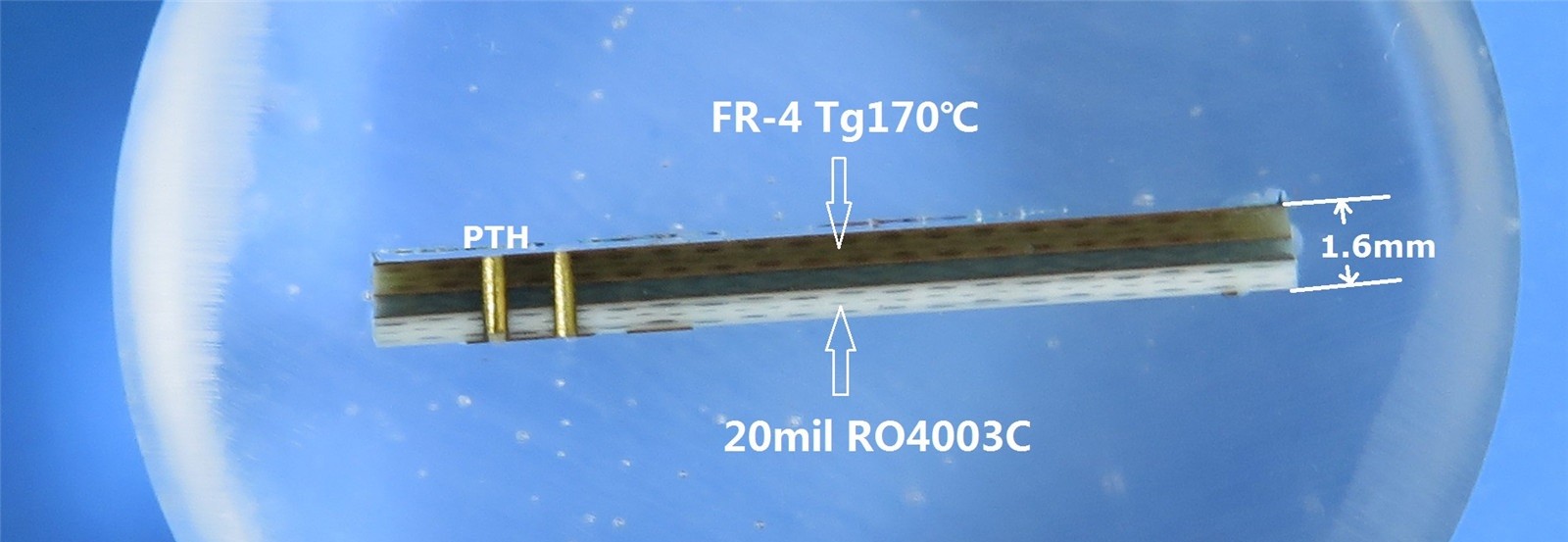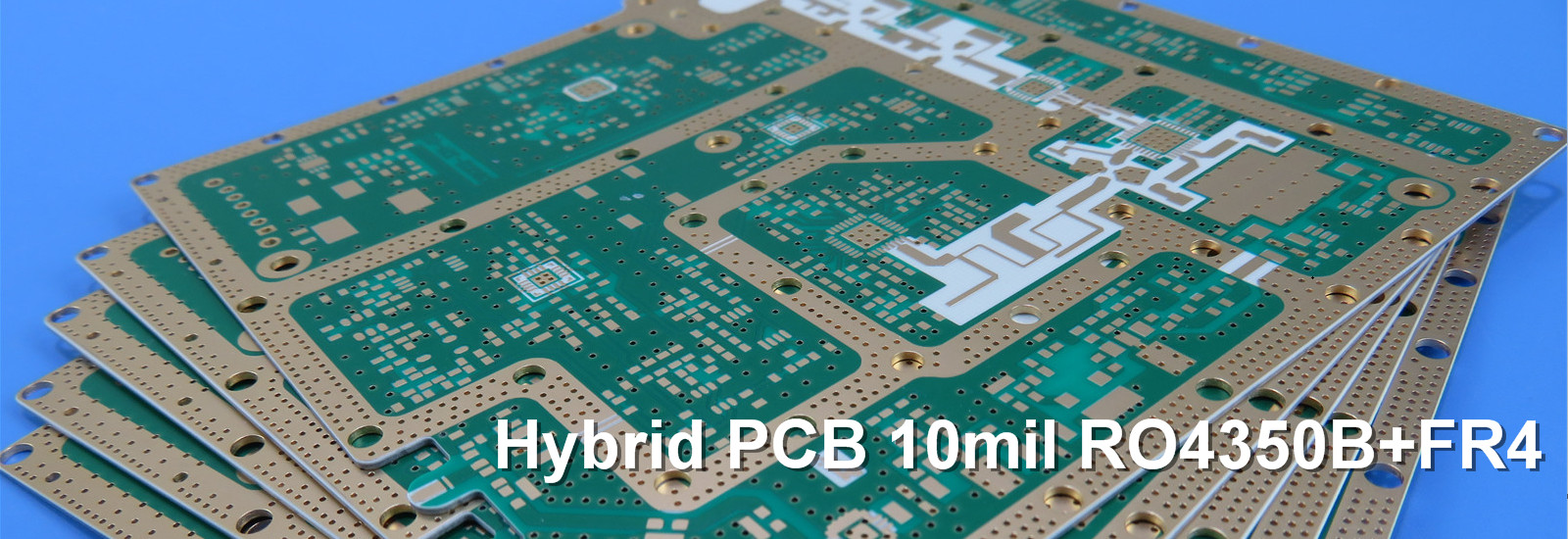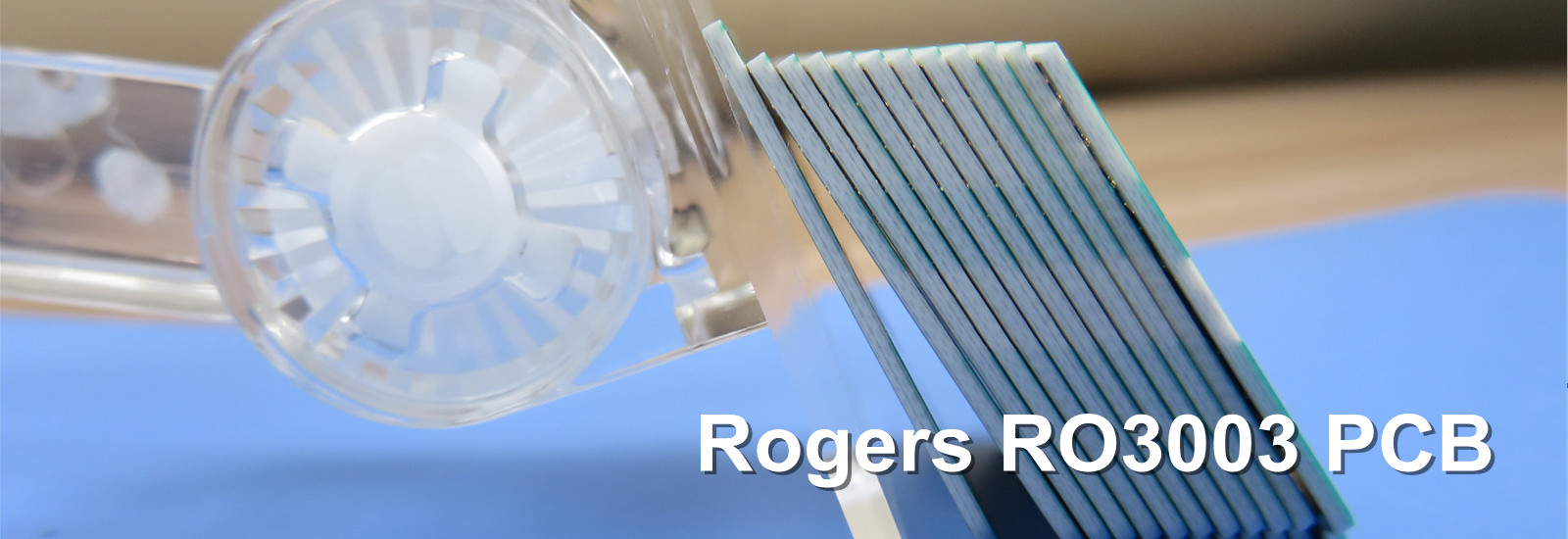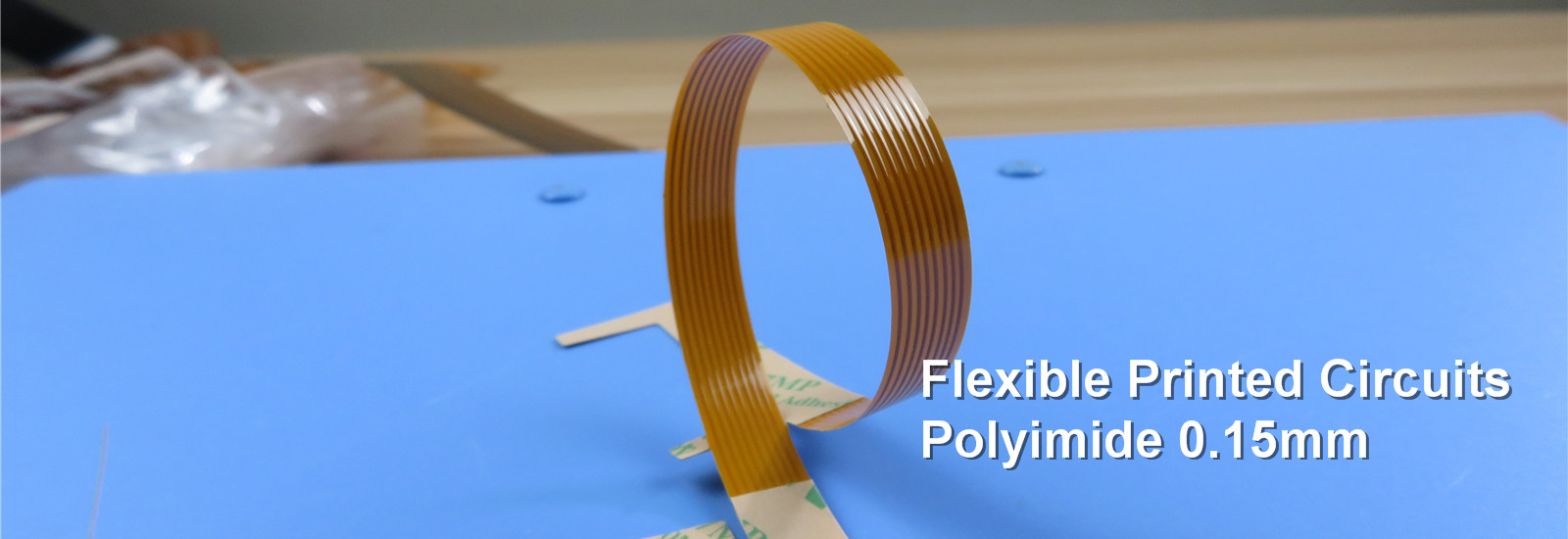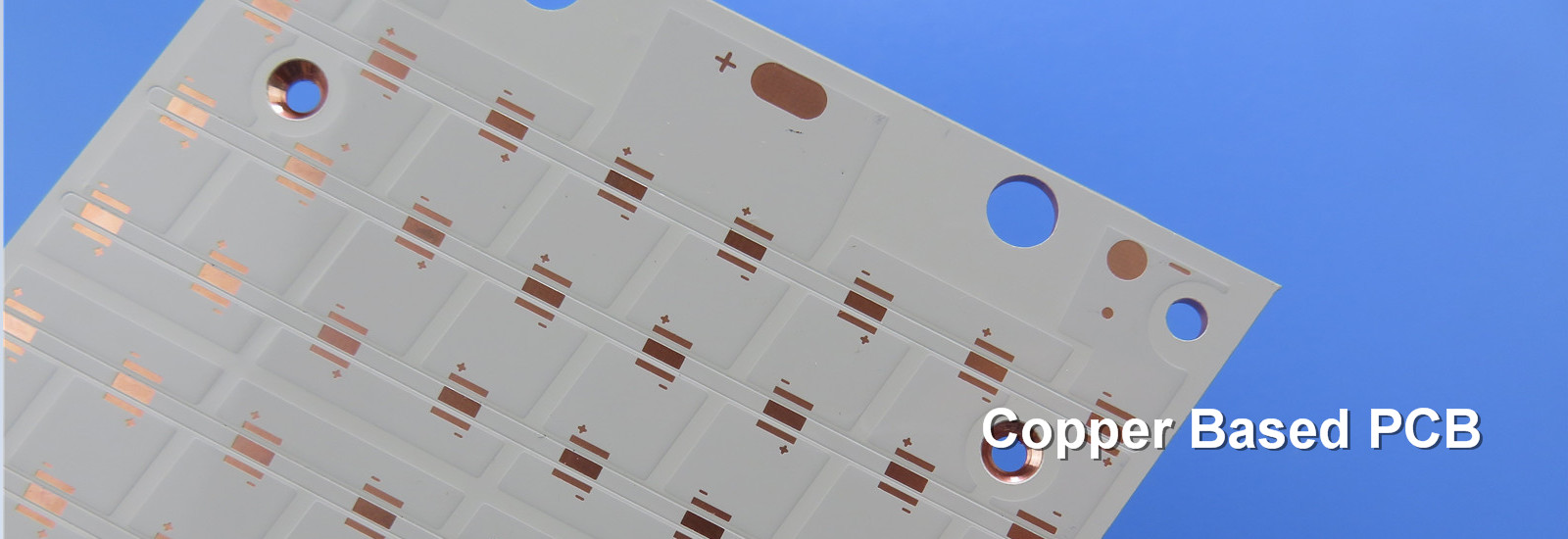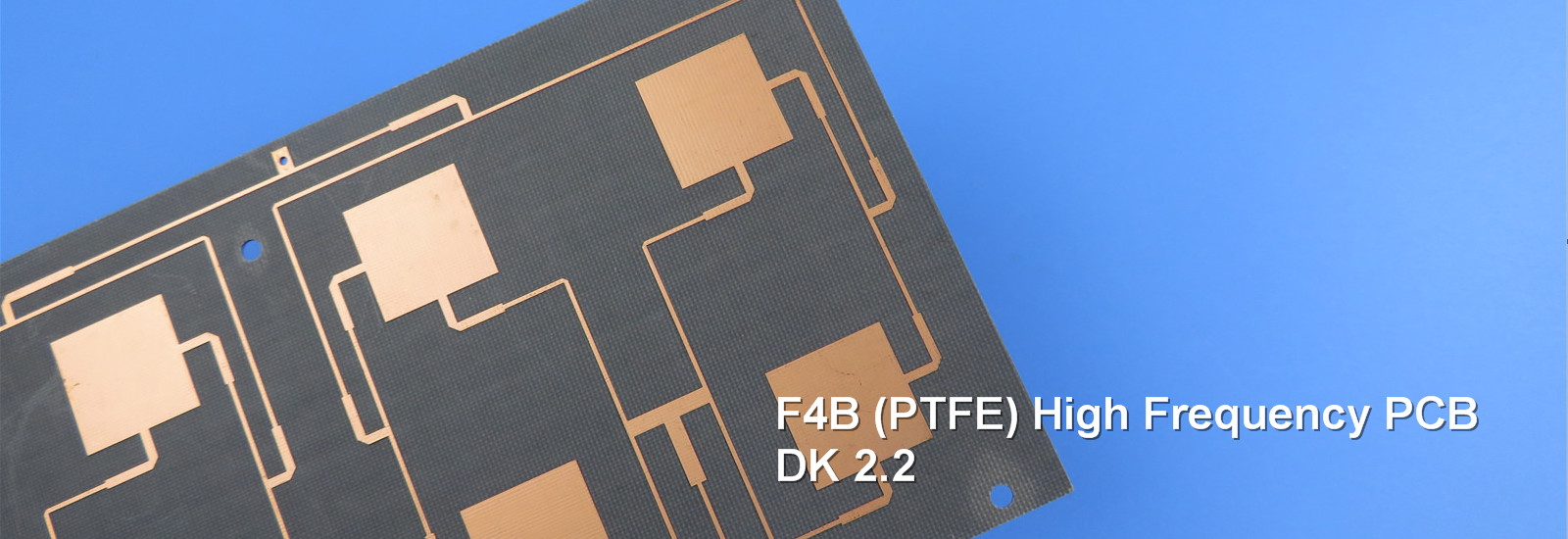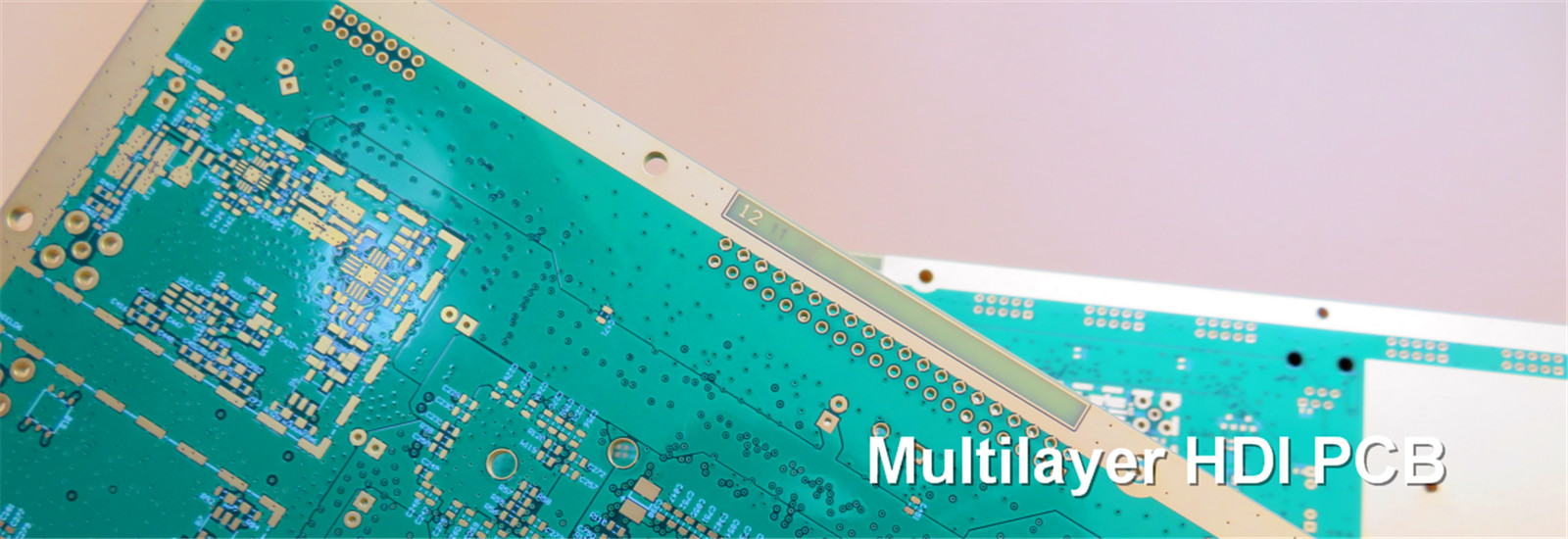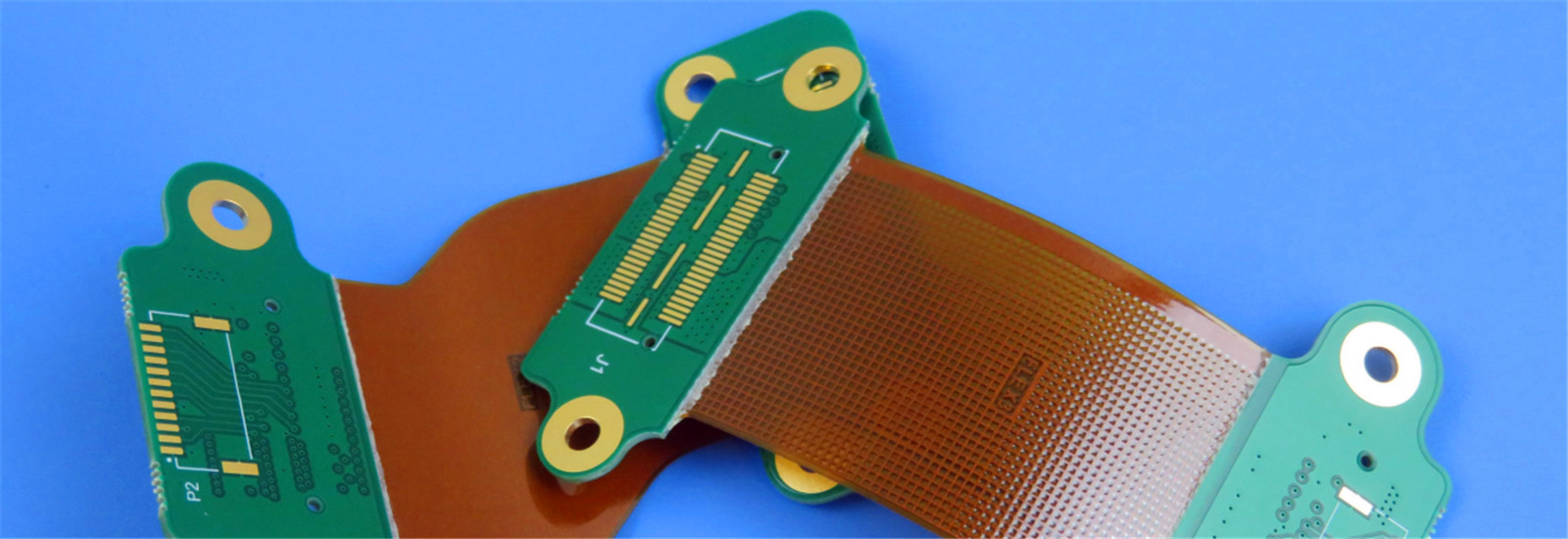How Does RO4003C LoPro Laminate Enhance RF PCB Performance
2025-12-03
The performance of radio frequency (RF) and high-speed digital circuits is intrinsically linked to the substrate material and construction of the printed circuit board (PCB). The presented board exemplifies how advanced hydrocarbon ceramic materials can be leveraged to achieve superior signal integrity and thermal performance while maintaining compatibility with standard PCB processing techniques.
1. Introduction
As operational frequencies in communication and computing systems continue to escalate, the electrical properties of the PCB substrate become a dominant factor in system performance. Traditional FR-4 materials exhibit excessive loss and unstable dielectric constant at microwave frequencies, necessitating the use of specialized low-loss laminates. The following technical analysis focuses on a specific implementation using Rogers Corporation's RO4003C LoPro series, a material engineered to provide an optimal balance of high-frequency performance, thermal management, and manufacturability.
2. Material Selection: RO4003C LoPro Laminate
The core of the design is the RO4003C LoPro laminate, a hydrocarbon ceramic composite. Its selection is justified by several key characteristics:
Stable Dielectric Constant: A tight tolerance of 3.38 ± 0.05 at 10 GHz ensures predictable impedance control across the board and over varying environmental conditions.
Low Dissipation Factor: At 0.0027, the material minimizes dielectric loss, which is critical for maintaining signal strength and integrity in applications exceeding 40 GHz.
Enhanced Thermal Performance: The laminate features a high thermal conductivity of 0.64 W/m/K and a glass transition temperature (Tg) exceeding 280°C, ensuring reliability during lead-free assembly and in high-power operational environments.
Low-Profile Copper: The "LoPro" designation refers to the use of reverse-treated foil, which creates a smoother conductor surface. This reduces conductor loss and dispersion, directly improving insertion loss compared to standard electrodeposited copper foils.
A significant advantage of the RO4003C material system is its compatibility with standard FR-4 multilayer lamination and processing procedures, eliminating the need for costly via pre-treatments and thereby reducing overall manufacturing cost and complexity.
3. PCB Construction and Stack-up
The board is a 2-layer rigid construction with the following detailed stackup:
Layer 1: 35 µm (1 oz) rolled copper foil.
Dielectric: Rogers RO4003C LoPro core, 0.526 mm (20.7 mil) thick.
Layer 2: 35 µm (1 oz) rolled copper foil.
The finished board thickness is 0.65 mm, indicating a thin-profile build suitable for compact assemblies. The construction details reflect a design optimized for high yield and performance:
Critical Dimensions: Minimum trace/space of 5/5 mil and a minimum drilled hole size of 0.3 mm demonstrate a design rule set that is readily achievable while supporting a moderate level of routing density.
Surface Finish: The specification of silver underplating with gold plating (often referred to as "hard" or "electrolytic" gold) is indicative of an RF design. This finish provides excellent surface conductivity for high-frequency currents, low contact resistance for connectors, and superior environmental robustness.
Via Structure: The board utilizes 39 through-hole vias with a plating thickness of 20 µm, ensuring high reliability for interlayer connections. The absence of blind vias simplifies the fabrication process.
4. Quality and Standards
The PCB layout data was supplied in Gerber RS-274-X format, ensuring accurate and unambiguous data transfer to the manufacturer. The board was fabricated and tested to IPC-A-600 Class 2 standards, which is the typical benchmark for commercial and industrial electronics where extended life and performance are required.
Quality Assurance: A 100% electrical test was performed post-manufacturing, verifying the integrity of all connections and the absence of shorts or opens.
5. Application Profile
The combination of material properties and construction details makes the PCB suitable for a range of high-performance applications, including:
Cellular base station antennas and power amplifiers, where low passive intermodulation (PIM) is critical.
Low-noise block downconverters (LNBs) in satellite reception systems.
Critical signal paths in high-speed digital infrastructure, such as server backplanes and network routers.
High-frequency RF identification (RFID) tags.
6. Conclusion
The analyzed PCB serves as a practical case study in the effective application of Rogers RO4003C LoPro laminate. The design leverages the material's stable electrical properties, low loss profile, and excellent thermal characteristics to meet the demands of modern high-frequency circuits. Furthermore, the fabrication specifications demonstrate that such high performance can be achieved without resorting to exotic or prohibitively expensive manufacturing processes.
View More
Is a TLX-8 PCB the Right Choice for Your High-Frequency Application
2025-12-01
In the demanding world of RF and microwave design, the printed circuit board (PCB) is far more than a simple interconnection platform—it is an integral component of the system's performance. Material selection, stack-up, and fabrication tolerances directly impact signal integrity, thermal management, and long-term reliability.
Today, we're deconstructing a specific, high-performance PCB build to illustrate how material science and precision manufacturing converge to meet the rigorous demands of aerospace, defense, and telecommunications applications.
The Blueprint: A High-Frequency, 2-Layer Board
Let's start with the core construction details:
Base Material: Taconic TLX-8
Layer Count: 2 layers
Board Dimensions: 25mm x 71mm (±0.15mm)
Critical Fabrication Tolerances:
Surface Finish: Immersion Gold (ENIG)
Quality Standard: IPC-Class-2
Testing: 100% Electrical Test
This isn't a standard FR-4 board. The choice of TLX-8, a PTFE fiberglass composite, immediately signals an application where electrical performance is non-negotiable.
Why TLX-8? The Substrate as a Strategic Component
TLX-8 is a premier high-volume antenna material chosen for its exceptional and stable electrical properties, coupled with remarkable mechanical robustness. Its value proposition lies in its versatility across severe operating environments:
Resistance to Creep & Vibration: Critical for structures bolted into housings that experience extreme forces, such as during a rocket launch.
High-Temperature Performance: With a decomposition temperature (Td) exceeding 535°C, it can withstand exposure in engine modules or other high-heat scenarios.
Radiation Resistance & Low Outgassing: A mandatory property for space-borne electronics, as recognized by NASA.
Dimensional Stability: With values as low as 0.06 mm/m after bake, it ensures consistent registration and impedance control, even under thermal stress.
Decoding the Electrical and Mechanical Advantages
The datasheet properties of TLX-8 tell a compelling story for RF engineers:
Low & Stable Dielectric Constant (Dk): 2.55 ± 0.04 @ 10 GHz. This tight tolerance is crucial for predictable velocity of propagation and consistent impedance matching across the board and across production batches.
Ultra-Low Dissipation Factor (Df): 0.0018 @ 10 GHz. This translates to minimal signal loss, making it ideal for high-frequency and low-noise applications.
Excellent Passive Intermodulation (PIM) Performance: Typically measured below -160 dBc, a critical figure of merit for modern cellular infrastructure and antenna systems where spurious signals can cripple network capacity.
Superior Thermal & Chemical Properties:
Analyzing the Stack-up and Fabrication Choices
The simple 2-layer stack-up is elegant and effective for this low-component-count design:
Copper (35µm) | TLX-8 Core (0.787mm) | Copper (35µm)
Key fabrication notes:
No Solder Mask or Bottom Silkscreen: This is common in RF boards where the laminate itself forms the transmission medium, and any additional material can affect the electromagnetic field and introduce loss.
Immersion Gold (ENIG) Surface Finish: Provides a flat, solderable surface with excellent oxidation resistance, ideal for fine-pitch components and reliable wire bonding if needed.
27 Vias on an 11-Component Board: This indicates a design where grounding, shielding, and thermal management are paramount. The robust 20µm via plating ensures reliability.
Typical Applications: Where This Technology Excels
This specific combination of material and fabrication is tailored for critical functions in:
Radar Systems (for automotive, aerospace, and defense)
5G/6G Mobile Communication Infrastructure
Microwave Test Equipment & Transmission Devices
Critical RF Components: Couplers, Power Splitters/Combiners, Low-Noise Amplifiers, and Antennas.
Conclusion: A Testament to Precision Engineering
By selecting Taconic TLX-8 and adhering to tight fabrication tolerances, this construction achieves a blend of high-frequency performance, exceptional reliability, and environmental resilience that is simply unattainable with standard materials. It underscores a critical principle: in advanced electronics, the foundation—the PCB itself—is a active and decisive element in system success.
View More
AI Demand Drives Upstream Chain Reaction, CCL Industry Sees "Volume and Price Rising Together"
2025-11-25
The AI computing power revolution is driving a surge in demand for high-end printed circuit boards (PCBs), creating structural growth opportunities for its upstream key base material – Copper Clad Laminate (CCL). Some high-grade categories have become hot commodities. A person from a domestic CCL factory stated, "Demand has recovered in the first half of the year, but whether it's supply falling short of demand depends on the product. There is indeed very strong demand for some products, while others are experiencing steady growth." Through multiple interviews, a CLS reporter recently learned that many CCL companies have raised product prices several times within the year, and dynamic adjustments are still ongoing. Cost pressures and demand dividends are major drivers behind the price increases. Optimistic about the future growth potential of high-end products like high-frequency & high-speed and high thermal conductivity CCL, domestic manufacturers are also accelerating related capacity layout.
It is understood that CCL constitutes a major part of PCB cost structure, and copper foil, as the main raw material for CCL, accounts for over 30% of the cost. The rise in copper prices directly impacts CCL production costs. International copper prices have continued to rise this year, with LME copper hitting a high of $11,200 per ton by the end of October. Regarding the main reasons for high copper prices, Zhuochuang Information analyst Tang Zhihao mentioned in an interview with a CLS reporter that AI computing centers, copper foil for chips, and grid upgrades are driving copper consumption. China's new energy and power sectors maintain high prosperity, offsetting the drag from the real estate downturn, while low inventories amplify price elasticity. "Looking ahead, declining mine grades and deep-level mining lead to continuously rising sustaining CAPEX. The average annual growth rate of mine production from 2025-2030 is estimated to be only about 1.5%, far lower than the demand growth rate. Supply shortage expectations will provide hard support for copper prices," Tang Zhihao believes. In the short to medium term, the core LME copper trading range is $10,000-$11,000/ton. In the medium to long term, if mine-side investment still lags and green demand exceeds expectations, the average price is expected to gradually move up to $10,750-$11,200/ton.
On the consumer side, some copper-using enterprises are implementing hedging operations to cope with rising copper prices. Others are more direct, achieving cost pass-through by raising the prices of sheet materials. Just in the first half of this year, due to the "sharp rise in copper prices", leading major manufacturer Kingboard Laminates (01888.HK) issued price increase notices in March and May, which triggered other manufacturers in the industry to follow suit.
The price hikes are not only driven by costs; structural growth on the demand side also contributes to the increase in CCL product prices. "PCB is a mature manufacturing industry that constantly updates according to downstream demand. The market changes fast, demand is fast, and as material suppliers, we must also change accordingly," an industry practitioner told CLS, adding that "AI computing power, robotics, drones, new energy vehicles' electronic control systems all require CCL and circuit boards, and the usage volume is relatively large."
CLS reporters recently posed as investors calling listed CCL companies. A staff member from the securities department of Nanya New Material (688519.SH) stated that the current capacity utilization rate is over 90%. Prices are already rising, and regarding the timing of increases, they revealed "there was an increase in October." Additionally, there were price hikes in the first half of the year. A staff member from Huazheng New Material (603186.SH) also said that the current capacity utilization rate is high, showing an increase compared to the first half of the year and last year. Mentioning price increases, they said, "We are making corresponding adjustments. We started adjusting in October, making dynamic adjustments based on products and customers." Regarding whether product prices would be adjusted due to high copper prices, the staff member indicated a need to comprehensively consider the extent and sustainability of the raw material price increase. A staff member from Jin'an Guji (002636.SZ) stated that the company's pricing follows the market, and price and demand complement each other. Product prices can only rise when market demand is strong.
Furthermore, some industry manufacturers stated that they are still adjusting prices for different CCL products in batches. A person from a domestic CCL factory told the CLS reporter that overall market demand is increasing. The company's sales volume maintained double-digit year-on-year growth in 2023 and 2024. While sales volume increased, profitability was poor, and non-GAAP net profit was still in the red, due to previously low prices. Domestic competition is fierce, and downstream players have their own cost requirements, meaning upstream materials cannot be too expensive, preventing CCL prices from being very firm. The person admitted that CCL product prices started falling in 2022 and continued until last year. Although currently recovering, they are far from the levels seen in 2021.
However, further improvement in market conditions and the benefits from earlier price increases have significantly boosted manufacturers' performance. In the first three quarters of this year, industry companies such as Shengyi Technology (600183.SH), Jin'an Guji (002636.SZ), and Ultrasonic Electronic (000823.SZ) achieved growth in both revenue and net profit, with net profit increasing year-on-year by 20% to 78% respectively. Regarding the performance change, Jin'an Guji pointed out in its third-quarter report that it was mainly due to increased gross profit from its main products.
As demand for high-grade CCL in application scenarios like AI servers climbs, domestic manufacturers are also accelerating the layout of technology for products above M6 grade. For example, Shengyi Technology's very low-loss products are already in mass supply; Chaoying Electronic (603175.SH) revealed on an interactive platform that the company is closely cooperating with several customers on M9 CCL technology. Nanya New Material's General Manager Bao Xinyang recently stated at an earnings conference that in the high-speed material field, the company has proactively initiated the R&D layout for M10 grade CCL products. The technical focus for the next-generation products will be on achieving even lower dielectric loss to further enhance signal transmission quality, lower Coefficient of Thermal Expansion (CTE) to improve packaging interconnect reliability, and higher heat resistance to meet growing heat dissipation demands. Regarding the progress of M10 grade CCL products, a staff member from the company's securities department said, "Lab products are already out."
Industrial Research believes that AI CCL is becoming the engine driving a new round of industry growth. According to their estimates, the AI CCL market (for AI servers, switches, optical modules) will reach $2.2 billion in 2025, a year-on-year increase of 100%. It is estimated that in 2026, due to ASIC volume shipment and NVIDIA's new products upgrading CCL to M9, the AI CCL market will reach $3.4 billion, a year-on-year increase of 60%. By 2028, it is expected to reach $5.8 billion. The compound annual growth rate (CAGR) for AI CCL from 2024 to 2028 is projected to be 52%.
---------------------------------
Source: CLS
Disclaimer: We respect originality and also focus on sharing; the copyright of text and images belongs to the original author. The purpose of reprinting is to share more information, does not represent the position of this account, and if your rights are infringed, please contact us promptly, we will delete it as soon as possible, thank you.
View More
QFII Heavily Bets on PCB Sector Riding the AI Wave
2025-11-18
Driven powerfully by the artificial intelligence (AI) wave, the printed circuit board (PCB) industry is facing unprecedented development opportunities. The Ministry of Industry and Information Technology recently solicited public opinions on the "Printed Circuit Board Industry Standard Conditions and Announcement Management Measures (Draft for Comments)." This aims to promote the industry's transformation, upgrading, and shift towards high-end, green, and intelligent development by phasing out outdated production capacity and incentivizing technological innovation, adding another policy tailwind to this high-growth sector.
The vigorous development of the AI industry is directly translating into significant growth for the high-end PCB market. According to data from the authoritative agency Prismark, in 2024, driven by strong demand from AI servers and high-speed networks, the output value of high-layer count boards (18 layers and above) and HDI boards increased significantly by 40.3% and 18.8% year-on-year, respectively, leading the growth among other PCB product segments. Prismark predicts that from 2023 to 2028, the compound annual growth rate of HDI related to AI servers will reach a remarkable 16.3%, making it the fastest-growing engine in the AI server PCB market and opening up vast potential for the industry.
The market fervor is fully reflected in the performance reports of listed companies. According to statistics from Databao, the 44 A-share listed companies in the PCB industry achieved a total operating revenue of 216.191 billion yuan in the first three quarters of this year, a year-on-year increase of 25.36%; their combined net profit attributable to shareholders reached 20.859 billion yuan, surging 62.15% year-on-year. Among them, over 75% of the companies saw year-on-year growth in net profit attributable to shareholders, and four companies successfully turned losses into profits, presenting a prosperous picture of high growth and high profitability for the industry as a whole.
Industry leader Shengyi Electronics performed particularly brilliantly, with its operating revenue for the first three quarters surging 114.79% year-on-year and its net profit attributable to shareholders skyrocketing 497.61%. The company stated in investor communications that the first phase of its high-layer count, high-density interconnect circuit board project for intelligent computing centers has begun trial production, and the second phase is already being planned in advance, demonstrating strong confidence in the market outlook. Another company, Xingsen Technology, which returned to profitability, saw its revenue grow over 23% in the first three quarters. Its CSP packaging substrate capacity is already at full production, newly added capacity is ramping up quickly, and its FCBGA packaging substrate project is in the small-batch production stage, with business expansion steadily progressing.
The industry's robust prospects have also attracted the attention of international capital. Data shows that by the end of the third quarter of this year, a total of 13 PCB concept stocks were heavily held by QFII (Qualified Foreign Institutional Investors), with a combined holding market value reaching 16.635 billion yuan. Among them, industry leader Shengyi Technology had a QFII heavy holding ratio as high as 12.32%, with a holding market value of 15.936 billion yuan, highlighting foreign capital's firm confidence in its long-term value. Companies like Jingwang Electronics and Junya Technology also attracted QFII investments, with well-known foreign institutions such as UBS AG appearing among their top ten shareholders.
From policy guidance to market demand, from performance explosion to capital favor, the PCB industry is standing at the forefront of the AI trend. Leveraging its indispensable core position in the electronics industry chain, it is undergoing a value revaluation driven jointly by the AI wave and market expansion. With capital's favor, its future growth potential deserves continued attention.
---------------------------------------
Source: Global Times
Disclaimer: We respect originality and also value sharing; the copyright of text and images belongs to the original author. The purpose of reprinting is to share more information, which does not represent the stance of this publication. If your rights and interests are infringed, please contact us promptly, and we will delete it as soon as possible. Thank you.
View More
AI-Driven Demand for PCBs Sees Significant Increase, Industry Enters New Round of Expansion Peak
2025-11-03
Driven by the wave of AI development, the PCB (Printed Circuit Board), known as the "nerve center" of electronic devices, is experiencing a significant increase in market demand, and the industry is entering a new peak expansion period.
Leading Companies Actively Expanding Capacity
Pengding Holdings, with its diversified PCB product lines widely used in communications electronics, consumer electronics, high-performance computing products, EVs, and AI servers, stated in an institutional survey on October 31 that since 2025, with the booming development of emerging industries like artificial intelligence, market requirements for PCB performance and precision have increased, also bringing vast market opportunities. Against this backdrop, the company is steadily advancing the in-depth development of various business segments while intensifying market expansion and steadily promoting the certification and production of new products. In the first three quarters of 2025, the company achieved revenue of 26.855 billion yuan, a year-on-year increase of 14.34%, and net profit attributable to shareholders of 2.407 billion yuan, up 21.23% year-on-year.
Regarding capacity layout, Pengding Holdings stated it is actively promoting the construction of new production capacity in Huaian, Thailand, and other locations. During the reporting period, the company's capital expenditure reached 4.972 billion yuan, an increase of nearly 3 billion yuan compared to the same period last year. With the explosion in AI computing power, the company has entered a new peak expansion period. In the coming years, as new capacity is gradually released, the computing power field will become an important pillar for the company's development.
Similarly, since October, two PCB material companies, Defu Technology and Philip Rock, have disclosed financing and expansion plans. For example, Defu Technology plans to invest an additional 1 billion yuan to build R&D and production workshops for special copper foils like carrier copper foil, buried resistance copper foil, and high-frequency high-speed copper foil, along with supporting equipment facilities. Previously, Han's CNC announced adjustments to some of its raised fund investment projects, increasing the planned capacity of the "PCB Special Equipment Production Expansion and Upgrade Project" from 2,120 units annually to 3,780 units.
Industry-Wide Expansion Wave Arrives
Shenghong Technology recently stated that to consolidate its leading position in the global PCB industry and its advantages in fields like AI computing power and AI servers, the company continues to expand capacity for high-end products such as advanced HDI and high-layer count boards. This includes the Huizhou HDI equipment update and Plant 4 project, as well as HDI and high-layer count expansion projects in Thai and Vietnamese factories, with expansion speed leading the industry. Currently, all related expansion projects are progressing as planned, and the company will arrange capacity layout according to its strategic plan and business needs.
Dongshan Precision stated that its capacity expansion aims to increase high-end PCB production to meet medium to long-term customer demand for high-end PCBs in emerging scenarios like high-speed computing servers and artificial intelligence, while also further expanding the company's operational scale and enhancing overall economic benefits.
"Currently, the company's various technical transformation and expansion plans mainly target high-end data communication PCB products, which can support the company's business development needs," stated Guanghe Technology.
Jinlu Electronics also mentioned that the PCB expansion project at its Qingyuan production base is being constructed in three phases, with construction and production occurring simultaneously. The company is currently accelerating the first phase of the project, which has not yet commenced production.
Institutions Foresee Rapid Industry Growth
CITIC Securities stated that with the acceleration of AI computing power infrastructure construction, PCB demand is surging. Against this backdrop, the planned output value for high-layer count boards, HDI boards, and IC substrates is growing rapidly. Domestic manufacturers are actively expanding high-end production capacity, and China's leading PCB companies are expected to form project investment totaling 41.9 billion yuan during 2025-2026.
CSC Financial noted that AI PCBs are expected to continuously drive demand for updates and upgrades in PCB equipment. The PCB industry is characterized by a return to an upward cycle, product premiumization, and factory construction in Southeast Asia. Increases in output and process changes are expected to continuously drive demand for updates and upgrades in PCB equipment.
According to the "2025-2030 China Printed Circuit Board (PCB) Industry Development Trend and Forecast Report" released by Zhongshang Industry Research Institute, with the proliferation of AI technology and the strong market entry of new energy vehicles, PCB demand related to AI servers and automotive electronics has significantly increased, becoming an important driver for industry growth. The global PCB market size was $78.34 billion in 2023, a decrease of 4.2% year-on-year, and approximately $88 billion in 2024. It is projected to reach $96.8 billion in 2025.
Domestically, the same report shows China's PCB market size reached 363.257 billion yuan in 2023, a decrease of 3.80% from the previous year, and approximately 412.11 billion yuan in 2024. It is expected that the Chinese PCB market will recover in 2025, with a market size reaching 433.321 billion yuan.
Improved Performance Across the Industry Chain
The increased market demand in the PCB industry has already boosted the performance of related companies. Recently, over 10 listed companies in the PCB industry chain, including Shengyi Electronics, Han's CNC, and Dingtai GaoKE, disclosed significant year-on-year performance growth in their third-quarter reports.
----------------------------------
Source: Securities Times
Disclaimer: We respect originality and also focus on sharing; the copyright of text and images belongs to the original author. The purpose of reprinting is to share more information. This does not represent our stance. If there is any infringement of your rights, please contact us promptly. We will delete it as soon as possible. Thank you.
View More



